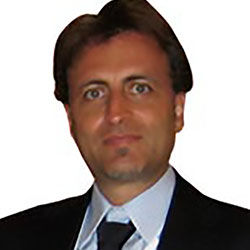


Alessandro D'Andrea

We estimate an interesting trend for 2011-2012: the investments for new machines for the converting industry of hygiene disposable products (baby and adult diapers, feminine hygiene, etc) will continue to grow, same as in the past two years, despite the global economic crisis started in 2009. The manufacturers of hygiene products still need to invest in new converters, both in the developed markets (to innovate their product and follow the new product trends) and in the emerging markets (where the new converters need to match the fast growing demand for disposable hygiene products). Also, Fameccanica plays a role in the growth of the sector, thanks to the capability to innovate and create new process and product solutions. Technological and product innovation is guaranteed by more than one hundred engineering managers and designers operating in the Design and Research and Development departments. By deploying flexibility, innovation and development at any manufacturing stage, Fameccanica’s range of products is ready to match the demanding market challenges from entry level to top speed solutions. Fameccanica foresees a bright growth of its business in 2011 and 2012. The company is continuing to strengthen its market leadership as a prime innovator and world class producer of advanced technological industrial solutions for the personal care business. Fameccanica has an entirely renewed line up and has expanded its presence in all continents in order to best suit its customers’ changing needs.
We are a global company and are present worldwide in all continents with more than 800 machines installed. That means that the focus is very large to cover all the different companies worldwide as well as all the different geographical areas. A special mention goes to the emerging markets, such as Africa and the Middle East, where we are working with all the major multinational and with the big regional players to better serve the local markets.
The budget of each investment in the developing markets is usually lower then the budget for the high performance machines that we install in the developed markets. The Companies investing in the new developing markets need to create the market for pads/diapers and the volumes required usually start from very low. That means small budget for low/medim performance, while the higher speed machines will come later, after 3-5 years. The Fameccanica challenge to better serve the developing markets is always to find the right machines to meet their specific business model and budgets. If their budget is not so big we have to find the right way to serve those companies. We have different models for different levels of performance, to follow the growth of the producers.
The demand for better fit of all hygiene products will be always very strong. So, we see a huge interest towards elastic materials.
Today, the Indian end users still do not give preference to disposable products and the amount of products is still limited. There is a cultural barrier to disposability. Also, the most of the pads/diapers distributed in India are imported from abroad. The numbers in the past have not been big enough to justify big investment by the Multinationals for a local manufacturing of hygiene products. This makes also evident that the nonwoven production did not boost in India. In the future we see a gradual change in the attitude of the end users which will buy more disposable diapers and all the sector will expand. This trend will be gradual, not very fast as in other parts of the world.
China experienced a much faster demand of disposable products than India. The growth in China have been and will continue to be significantly faster than in India. Even if the Indian per-capita income will soon reach the level where a large group of the population could afford the cost of the diapers, still it will take time until the majority of Indian consumers will be gradually convinced that the disposable products have real advantages for their daily life.
DISCLAIMER: All views and opinions expressed in this column are solely of the interviewee, and they do not reflect in any way the opinion of technicaltextile.net.